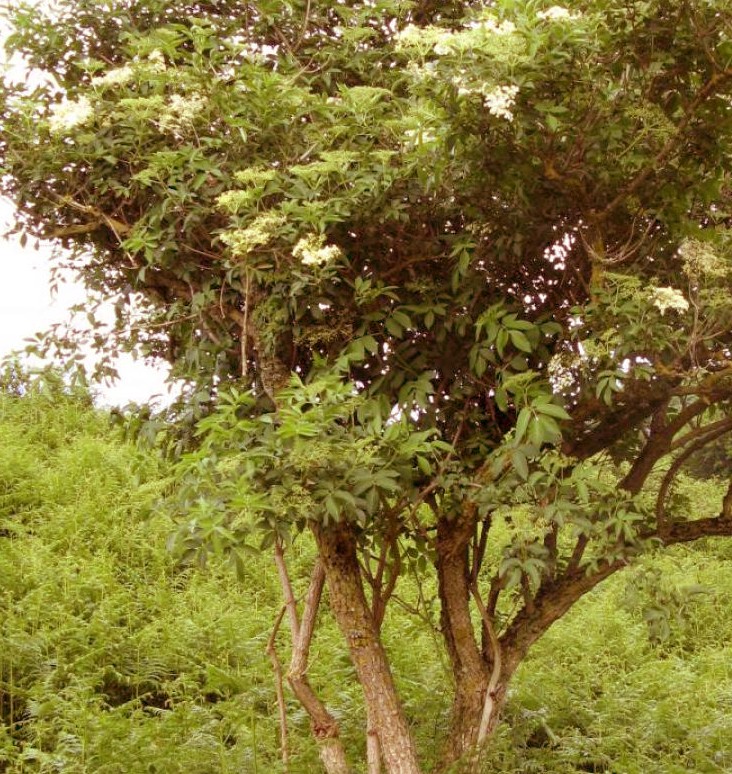What a glorious month this is, for the world is positively bursting into life with plants, shrubs, and trees producing leaves and turning the world green once more.
 One of the earliest trees to produce its leaves is not really a tree – yet it is rather too large to be classed as a bush. It has solid heartwood yet weak branches; it produces beautiful displays of creamy white sweet-smelling flowers yet its leaves smell like rodent’s nests; it produces compounds of cyanide yet it’s eaten by many.
One of the earliest trees to produce its leaves is not really a tree – yet it is rather too large to be classed as a bush. It has solid heartwood yet weak branches; it produces beautiful displays of creamy white sweet-smelling flowers yet its leaves smell like rodent’s nests; it produces compounds of cyanide yet it’s eaten by many.
Elder or Sambucus nigra is a species of contrasts and absolutely steeped in superstition and folklore. Growing it around one’s house will supposedly keep the Devil away; and perfectly sensible country folk will steadfastly refuse to dig it up lest it bring bad luck. Herbalists enthuse over its medicinal properties, insisting that all parts can be used to cure (if prepared diligently, of course,) a multitude of ailments from boils and bruises to flu and epilepsy. Healthy folk will appreciate the culinary products of this species, for the flowers produced in June and July provide elderflower cordial and wine to refresh those summer days. Moreover, the large shining clusters of dark berries displayed from late August are made into jellies and jams, more wine, and even brandy.
Humans are not the only species to relish the delicate flavour of elder – a multitude of insects cluster around the flowers in search of nectar and pollen. The profusions of early berries are a favourite for birds such as blue tits, bullfinches, and collared doves. Blackbirds, thrushes, and chaffinches happily nest amongst the branches. Elder is scattered all over the Mid Arun Valley in woodland pockets and along lanes, colonising fertile spots, and is the first species to fill gaps in hedgerows – thanks to those berry-eating birds!
Elder is easily recognised in the field for it has leaves rather like those of ash – divided into toothed, opposite leaflets. Its bark, when young, is covered in raised bumps, housing lenticels or breathing pores and when older it is furrowed and corky in texture. Squeeze a wet elder branch and water will run down your arm! For this reason it even appeals to tiny little mosses by providing an ideal microhabitat.
This humble little ‘tree’ that fills those empty spots in the countryside appears to have something to offer almost everyone.
